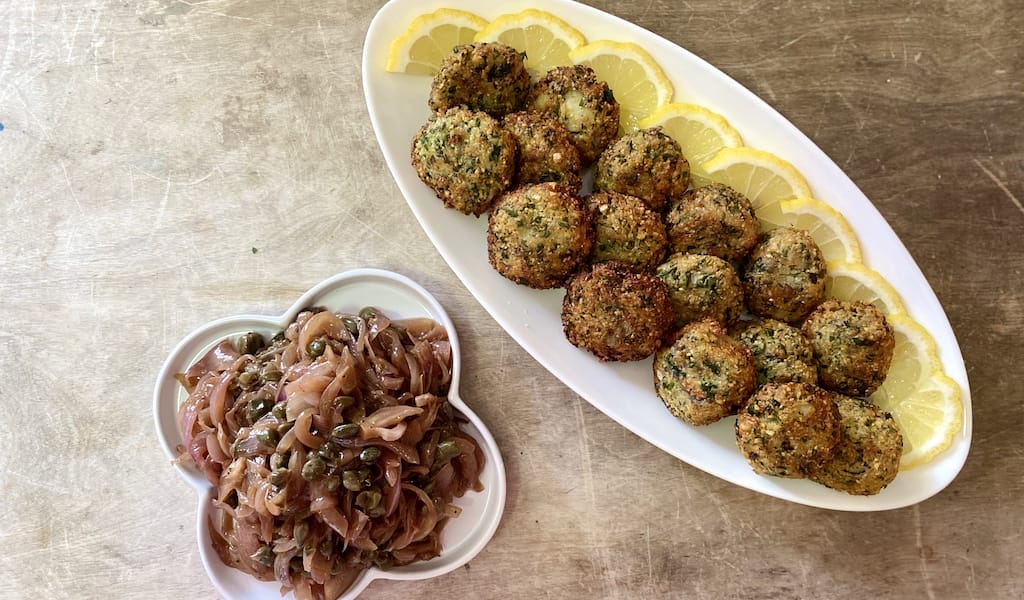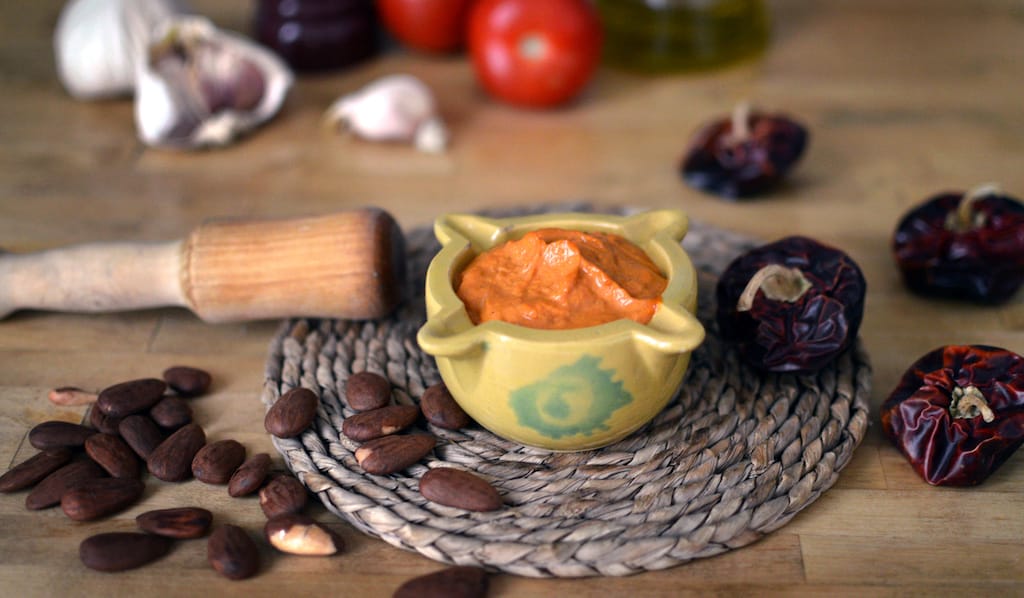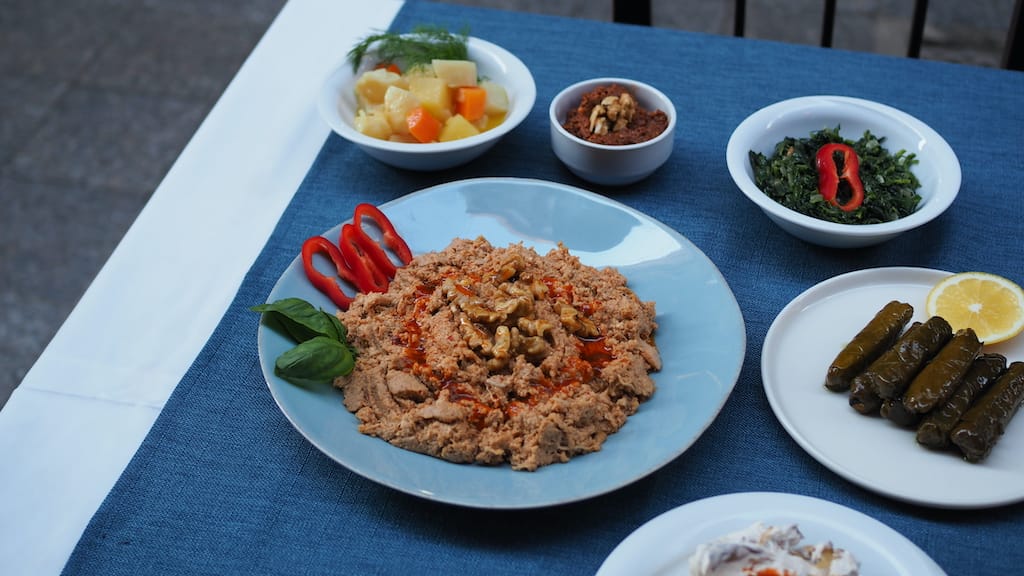Despite Greece’s small size, the country has many different regional cuisines, with Greek island cuisine – particularly that of the Cyclades, which is rooted in simplicity and seasonality – being one of my favorites.
The small, dry islands developed a kind of cucina povera, or “peasant cooking,” that was influenced in part by the Venetians, who governed the islands for over 300 years, and based on the few basic ingredients they could grow without much water, or without water at all: tomatoes, eggplants, watermelons, zucchinis, figs and grapes, all of which tend to be smaller in size but full of flavor.
The Cyclades are also rich in onions, herbs, edible weeds, capers, almonds, grains and pulses, particularly chickpeas and lathouri, yellow split peas. They also make beautiful cheeses – so many types, many of which have ancient roots – mostly out of sheep’s or goat’s milk, or a combination of the two (although there are a few cow’s milk cheeses made on Andros, Naxos, Tinos and Syros). While seafood was more common, albeit dependent on weather conditions, meat was mainly consumed on special occasions or Sundays.
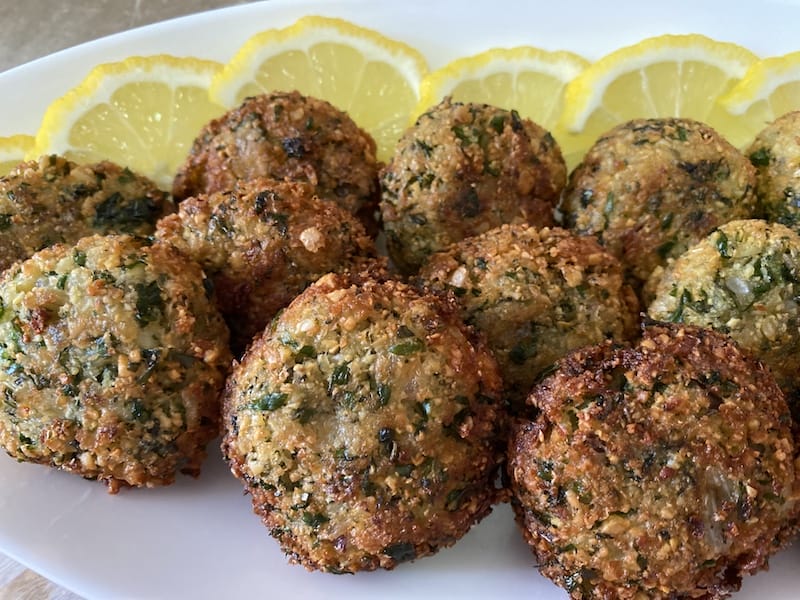
Even though the main ingredients were more or less common across the Cyclades, each island still managed to develop its own unique regional cuisine and creative recipes. The local gastronomy of Sifnos, located between Serifos and Kimolos, is especially well known – one of the country’s most famous chefs in the early 20th century, Nikolas Tsalementes, hailed from the island.
Chickpeas play an important role in Sifnos’ cuisine and form the basis of two of the island’s most famous dishes: revythada, slow-cooked chickpeas that are sealed in specially designed Sifnos clay pots and baked overnight in a wood-burning oven, and revythokeftedes, chickpea fritters. The latter are traditionally gluten-free, as boiled potatoes are used to bind the mix rather than flour. And since they are made with soaked raw chickpeas, as opposed to boiled chickpeas, they have a lovely crumbly texture that I love. Plus, the use of herbs rather than spices adds a fresh, light flavor to the patties (a characteristic common to dishes from these islands).
Capers (kapari, κάπαρη) are also abundant in the Cyclades, where they grow wild (as in most parts of Greece). Traditionally all parts of the plant, from the flower buds (more commonly known as capers) to the leaves, the shoots to the fruit (also called caper berries), have been used for both culinary and medicinal purposes.
Sifnos is famous for high-quality capers, which are a common ingredient in the local cuisine. Caper berries are generally preserved in one of three ways: pickled, packed with sea salt, and sundried. Different recipes call for different types of preserved capers, and there are some that treat capers as their main ingredient, like caper fritters and caper stifado (a stew-like dish with onions and tomato).
There are different versions of what we call kaparosalata, or caper salad, in Greece, particularly on the Cyclades. Usually it’s more like a dip made of creamed capers with boiled potato, onions and oil. The kaparosalata on the island of Sifnos, however, is more akin to a chutney, and I absolutely love it. It’s normally made with sundried capers, but since they are difficult to get abroad, I have adapted the recipe using the more readily available pickled capers. It pairs perfectly with the chickpea fritters. If you add a fresh tomato salad drizzled with extra-virgin olive oil and sprinkled with oregano, you’ve got the quintessential Greek island summer meal. Kali orexi! (Bon appétit!)
Revythokeftedes Sifnou (Sifnos-Style Chickpea Fritters)
Yields about 60 pieces
500 gr dried chickpeas
3 large red onions chopped
670 gr boiled potatoes, peeled and cooled
10 tablespoons chopped fresh mint
3 tsp dried marjoram
9 tablespoons chopped fresh parsley
Sea salt
Black pepper
Frying oil
I usually make a big batch of this recipe and freeze half of it for future use (to use the frozen mixture, let it come to room temperature, remove any excess water and then add seasoning). Soak chickpeas for about 20 hours (after which they should be easy to bite and eat). Grind the chickpeas in a food processor until pulverized into a very fine crumble. Empty the minced chickpeas in a large bowl. Once the boiled potatoes have cooled down, mash them well with a fork or potato masher. Add them to the minced chickpeas along with the onions and herbs and knead. If you are planning to freeze half of it, it is better to do so before you season with salt. Add salt and pepper to taste and knead well.
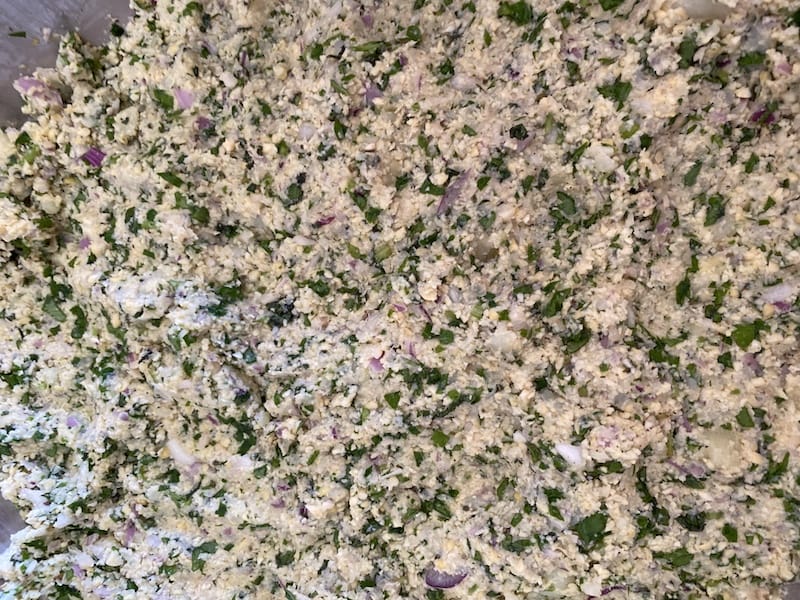
Cover and place in the fridge for a couple of hours. Remove from fridge and shape into balls (about 30 gr each) then press down to shape them into a puck-like shape.
Place a deep skillet on high heat and add plenty of frying oil (I use sunflower oil). Once hot start placing the chickpea patties in the oil, frying them for a couple of minutes on each side, until golden (you will need to play with the intensity of heat to keep them from burning). Place on kitchen towels to drain and serve.
Sifneiki Kaparosalata (Sifnos-Style Caper Salad)
150 gr capers
4 large red onions cut in half and then sliced
2 tablespoons olive oil
100 ml red wine vinegar
5 allspice berries
2 bay leaves
245 ml vinsanto wine from Santorini (PDO) – A naturally sweet wine from sundried grapes (may be substituted with a sweet Marsala or Madeira wine)
Salt and pepper
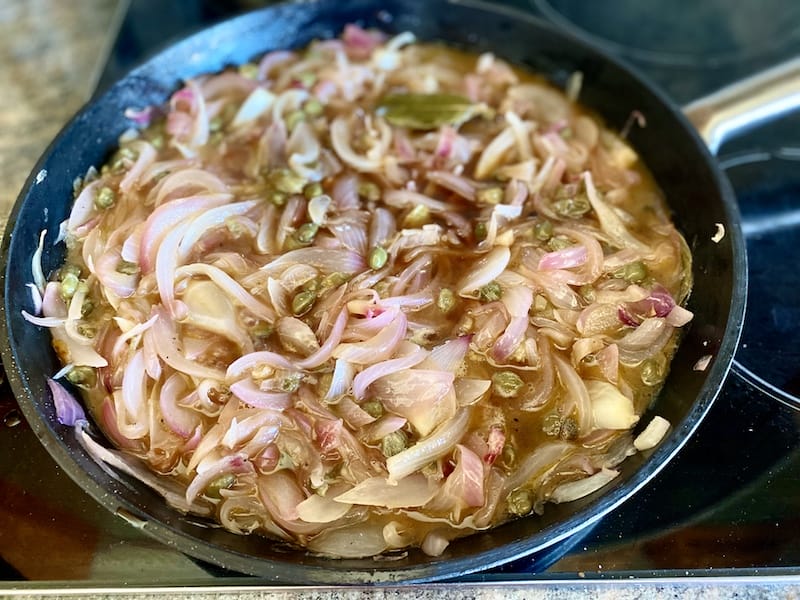
Drain the capers from the brine and desalt them by soaking them in water for a couple of hours, changing the water 2-3 times in the process. Place a large deep skillet on medium high heat. Add the olive oil and sauté the onions until soft. Add salt, pepper, the allspice balls and bay leaves and stir. Add in the drained capers and stir for a couple of minutes until most of the liquid from the onions has evaporated. Add in the vinegar and stir until most of the liquid is again gone. Now bring the heat down to medium and add in the wine, mix and simmer for about 40-45 minutes at low heat, until the liquid is gone and the onions look caramelized. Adjust seasoning if necessary and leave it to cool. The final result can be placed in sterilized jars and preserved in the fridge for several months.
To convert metric measurements to U.S. and British kitchen units, click here.
 April 2, 2024 Grandma’s Folar Recipe
April 2, 2024 Grandma’s Folar Recipe
Folar is the generic name given to traditional Easter sweet bread in Portugal. Making it […] Posted in Lisbon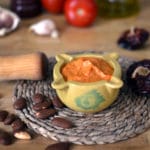 March 20, 2024 Recipe
March 20, 2024 Recipe
Served as a sauce, romesco is certainly striking: It has an intense dark orange color […] Posted in Barcelona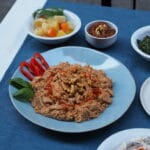 February 16, 2024 Recipe
February 16, 2024 Recipe
Some recipes are so deeply connected with the region from which they originate that they […] Posted in Istanbul
Published on June 19, 2020
Related stories
April 2, 2024
LisbonFolar is the generic name given to traditional Easter sweet bread in Portugal. Making it from scratch is somewhat of a long process, but being confined due to the coronavirus crisis, we seem to have a bit more time on our hands than expected. My family’s folar recipe is from my grandmother Felismina, who was…
March 20, 2024
BarcelonaServed as a sauce, romesco is certainly striking: It has an intense dark orange color and a dense texture that saturates and blankets whatever you dip in it. Once in the mouth, you get a piquant touch of vinegar, which is soon enveloped by the nutty creaminess of ground almonds (or perhaps hazelnuts) and olive…
February 16, 2024
Istanbul | By Lian Penso Benbasat
IstanbulSome recipes are so deeply connected with the region from which they originate that they are simply named after that place. Circassian chicken, an appetizer beloved in Turkey and throughout the Caucasus, is such a dish. The recipe itself takes on many different variations across different geographical locations, much like the mosaic of people and…







































